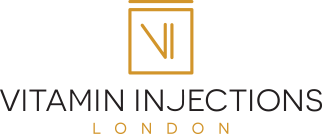Glossary
Alpha Lipoic Acid (ALA)
ALA is the synthetic form of the naturally occurring lipoic acid. It is an organic sulfur compound that is found in every cell of the body, which is required for glucose synthesis for energy production. It is famous for its antioxidant properties. Alpha lipoic acid must not be confused with alpha linoic acid (ALA) which is a type of plant omega 3 fatty acid.
Amino Acids
These are the basic compounds that come together to form proteins. They are popularly referred to as ‘protein building blocks’. Twenty types of amino acids are needed to make proteins. The human body is only capable of making ten of these amino acids while the rest have to be sourced from the diet.
Ceramide
This is a lipid between the cell-forming corneum. It fortifies the defence organism of the outer skin, normalises keratin layers and restructures the skin cell matrix.
Choline
This is a type of vitamin in the B-complex group that the body makes in small amounts. Most of the body needs for choline is derived from the diet. Choline is necessary for normal intra-uterine fetal growth and development. Common choline sources include egg yolk and wheat germ.
Cortisol
A hormone produced by the adrenal cortex. It is the main glucocorticoid produced in the body. Among many functions of cortisol in the body is the production of glucose from other sources apart from carbohydrates. This process is called gluconeogenesis. The synthetic form of cortisol is called hydrocortisone.
Deoxycholate (DC)
This is a bile acid that is needed for the breakdown and absorption of fats from the gut. The acid is a product of bacterial activity in the gut. Deoxycholate (acid) is usually reabsorbed into the body where it is used to promote bile production from the liver. In this case it acts as a choleretic.
Epithelial Growth Factors (EGF)
These renew skin cells and stimulate their growth, preventing and diminishing pigmentation. EGF also contains trace elements that are good for fighting allergies and atrophic dermatitis.
Enzyme Inositol
This is an important enzyme that supports the normal functions of a cell such as the growth and biologically timed cell death. It is one of the many enzymes in a group collectively referred to as phosphodiesterase. It has effects on other cell functions including processing information and cell secretion.
Extension N-200 (Hydrolysed Collagen)
Extension N-200 is a collagen extracted from carrot. It replenishes collagen within the skin and plays an important role as a natural humectant and moisturiser.
Glutathione
This is a type of amino acid with powerful antioxidant properties. Many enzymes in the body use glutathione to improve their antioxidant activities. Glutathione is so important to the body that it is referred to as the ‘the mother/master antioxidant’. Body detoxification is another recognized function of glutathione. Glutathione is produced in the body although supplementation is often undertaken.
Hyaluronic Acid
A substance found in many of the body’s tissues and which has been proven to play important roles in the healing of wounds, skin health and inflammation regulation. Body fluids such as the synovial fluid contain large amounts of hyaluronic acid.
Hyaluronidase
This a substance naturally found in the body. It is an enzyme that breaks down hyaluronic acid. It is mostly used with other medications given under the skin as an injection to improve their availability to the body or to improve their efficacy. It is commonly used in the aesthetic industry in the management of wrinkles.
Kojic Acid
It is a natural substance produced by some fungi species. The commonest source is through rice malting procedures. Kojic acid is a common ingredient in many cosmetic products. It is important in the management of difficult to treat skin hyperpigmentation problems such as melasma and aging skin spots.
Melasma
This a common skin pigmentation disorder that is mostly seen on areas of the body continuously exposed to the sun. The areas affected most are the face, the neck, and the arms. Melasma lesions are characteristically brown-gray and are more pronounced on dark-skinned people. Almost 90% of those affected are women.
Mesotherapy
This is a micro-injection treatment developed by Michel Pistor, intended for various types of anti-ageing and wellness concerns. It involves the injection of therapeutic substances (including vitamins) into the fat layer of the skin called the mesoderm. Mesotherapy is used in the treatment of conditions such as cellulite, obesity, and facial rejuvenation.
Niacin
Niacin helps to speed up the skin brightening process by reducing inflammation. It works with other water-soluble ingredients, including B5 and Alpha Arbutin. It also prevents the skin from becoming too oily or breakout prone.
Nootropic Properties
Nootropic properties are observed in certain substances that enhance mental capabilities. Other names for nootropics include ‘smart drugs’ and the term ‘cognitive enhancers’ is commonly used. Functions that benefit from nootropics include mood, mental focus, recall (memory) and drive (motivation). A substance with true nootropic properties if non-toxic, non-sedating and support the brain during distressing situation such as low oxygen (hypoxic) conditions.
Nucleic Acid
Types of large molecules needed for the existence of all types of lives. They are found in both the deoxyribonucleic acids (DNA) and ribonucleic acid (RNA) – some of the basic building blocks of all life types. Other types of nucleic acid include transfer ribonucleic acid (tRNA), messenger ribonucleic acid (mRNA) and ribosomal ribonucleic acid (rRNA). Damage to these basic life form building blocks can lead to abnormal cell multiplication or the passing on of defective genes to offspring.
Platelet Rich Plasma (PRP)
This is a procedure where a person’s own platelets are used in the treatment of certain injured or degenerating body tissues. It is commonly used by athletes to hasten the healing of injured tendons or bone cartilage. The technique is also used in osteoarthritis, fractures and in post-surgery wound healing.
Stem Cells
These are cells at the level where they have not yet taken the role of specific cells. At this level, they are said to be undifferentiated. These cells can develop further and become different, specialised cells for specific areas of the body e.g. bones, muscles, skin or any other cells forming various tissue or organs. Stem cells are mainly sourced from embryos or from adults e.g. from the bone marrow. The Stemcellation IV/IM contains 15 natural amino acids which are essential for growth and eliminate sebum deep in the skin, which is responsible for acne and enlarged pores.
Placenta
This is an organ that develops in the uterus after a woman conceives. It forms the barrier between the growing fetus and the mother’s circulation. It acts as the source of sustenance and elimination channel for the baby in the uterus. Antibodies from the mother pass through the placenta to the baby thus building the baby’s immune system before they are born. The placenta detaches itself soon after the baby is born and it is expelled (that’s why it is called the afterbirth).
Trace Elements
These are added supplements for our bodies.
Tyrosinase
This enzyme regulates the production of the color pigment (melanin) in the skin. Poor production of tyrosinase leads to types of albinism while excessive production leads to too much melanin production and hyperpigmentation skin disorders such as age spots and melasma (see melasma definition above).
Vitamin B Complex
This is a group of individual vitamins that offer specific benefits to the body. They are distinctly different but are usually found together and work in harmony to make various body functions run smoothly. All vitamin B complex members are water soluble which means that we need to take them in our diet every day. There are 8 main vitamins in this group. They are: 1. Vitamin B1 (thiamine) – a co-enzyme in the breakdown of sugar (glucose and glycogen); 2. Vitamin b2 (riboflavin); 3. Vitamin B3 (niacin) – naturally present in our bodies. B3 is essential in the maintenance of a healthy heart and cells. It is converted into two essential co-enzymes, which support natural fats and sugars in our body. It also acts as a whitening agent; 4. Vitamin B6 (pyridoxine) – this is converted to a co-enzyme that functions in the metabolism of proteins and amino acids; 5. Vitamin B12 (cobalamine); 6. Folate (Vitamin B9); 7. Pantothenic acid (Vitamin B5); 8. Biotin.
Vitamin B12
Also called cobalamine, B12 is one of the principal 8 vitamins making up the vitamin B complex group. Apart from playing a role in the metabolism of carbohydrates for energy production, it promotes a healthy nervous system. The vitamin works with folate for healthy production of red blood cells and prevention of anemia.
Vitamin B5
More commonly referred to as pantothenic acid, it is one of the 8 vitamins forming the vitamin B complex group. It plays an important role in the synthesis of cholesterol and production of sex hormones. It’s also necessary for digestive, emotional and respiratory health.
Vitamin C (L-Ascorbic Acid)
This is a water-soluble vitamin and so the body cannot have stocks of it. This form of vitamin C has the natural properties of vitamin C unlike synthetic vitamin C (D-ascorbic acid). It has powerful antioxidant properties and promotes heart health among many other recognised health benefits.
Vitamin D2
The scientific name for this vitamin is ergocalciferol. It is one of the vitamins in the D group. It is fat soluble and the body can have stores of it. It is sourced mainly from plants and plays an important role in bone health. In comparison to vitamin D3, this vitamin has a shorter half-life.
Vitamin D3
The scientific name for vitamin D3 is cholecalciferol. It is a fat-soluble vitamin that is needed for healthy bones and joints. The skin can synthesise this vitamin when exposed to the sun. It is also available from dietary sources and from commercial supplements. The bioavailability of vitamin D3 is thought to be higher than that of vitamin D2.
Vitamin E
Scientifically known as tocopheryl acetate, vitamin E is a powerful antioxidant which stimulates blood circulation, prevents pigmentation and fortifies the skin’s fibroblasts, responsible for its elasticity and ‘snap back’. Vitamin E keeps the skin young and prevents UV-related photodamage.





